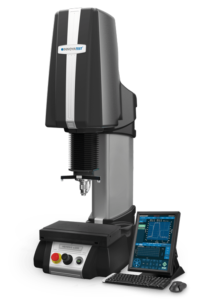
Knoop Hardness Tester
It is one of the hardness testing methods that use diamond-shaped indenters to determine a material’s hardness. The difference between the 2 diagonals is the key determinant of indentation and hardness testing. Compared to the other methods, the Knoop hardness tester tests mid-range materials since its methodology cannot measure hardness over 1000gf.

Properties of a Knoop Tester
It works well will test forces between 200gf and 1,000gf. Anything less than 200gf can bring variations which won’t give an exact material hardness. Moreover, materials with 1,000gf and above cannot give an accurate test as the indentation method gives larger variations.
Knoop hardness tester cannot define the material bulkiness since its indentation is not as deep as the Vicker tester. It works well with shorter distances. However, it also does not go below 200gf as it increases outcome variation. Although Knoop tester works well with small materials, if you increase the force to 5kgf, it might measure the hardness, but with larger variations.
To get the best result, ensure you remove any additional material through cleaning. If the material has dents or breakages, ensure you remove them as it might tamper with the final test result. Of the 4 testing methods, the Knoop hardness tester is the least used, thanks to its smaller material testing abilities. Few products use the Knoop testing technology to test material hardness. They can only work well in domestic or small-scale hardness testing outlets whose materials are smaller than 1000gf
